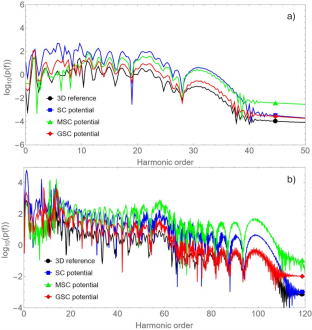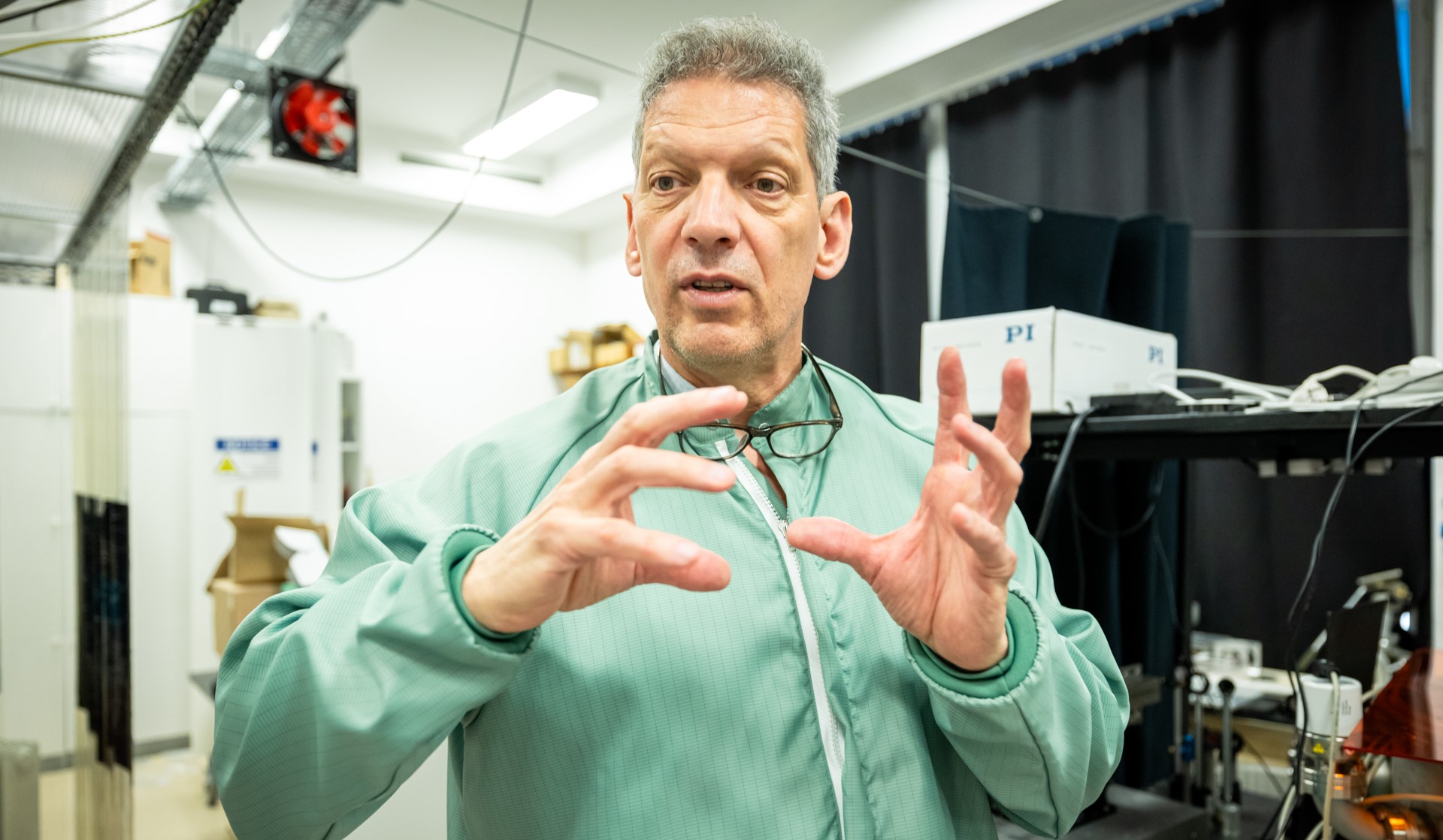
About us
In the context of our research topic – the theoretical description of light-matter interaction – “light” is either classical electromagnetic radiation, or a quantized field (containing an integer number of photons), while “matter” ranges from atomic-molecular systems to bulk solids. Besides fundamental research, we are open for the interpretation of specific experiments as well. We are also interested in applications that are related to quantum computation. One of our main projects is related to description of optical high-order harmonic generation (HHG). This is a highly nonlinear process, in which a strong laser pulse creates orders of magnitude weaker secondary radiation with frequencies that are integer multiples of the central frequency of the exciting field.
People

University staff members:
From left to right: Péter Földi (full professor, PI), Mihály Benedict (professor emeritus founder of the group), Attila Czirják (assoc. professor), Szabolcs Hack (assistant professor), István Magashegyi (assistant professor), Róbert Trényi (assistant professor)

PhD students:
Krisztina Sallai Mohammed al Saedi
Examples of our latest results:
The role of field quantization during high-order harmonic generation
Nowadays, in the world's leading laser laboratories, laser pulses with peak intensities exceeding the binding force of atomic nuclei on electrons can be routinely produced. In this high-field regime, one of the most important phenomena is high-order harmonic generation (HHG). This process not only provides insight into the fundamental details of nonlinear light-matter interactions but also plays a central role in the generation of attosecond pulses.
Traditionally, the theoretical description of HHG relies on a semiclassical approach, i.e., assuming that the driving radiation can be treated as a classical, time-dependent field. The primary reason for this assumption is that strong laser fields are composed of the combined effect of a vast number (up to 1015 photons per pulse), meaning the absorption or emission of individual photons has a proportionally small effect. In contrast, the harmonics (whose central frequencies are integer multiples of the driving field) are weaker by several orders of magnitude. This requires a quantized, photon-based description, which, besides theoretical significance, also raises the possibility of developing new types of light sources.
Our group has been studying this topic for years. Our latest result is the development of a highly general, material-independent model for high-order harmonic generation [1]. Applying this model, the time-dependence of the driving field and the third harmonic was determined, which was visualized using a phase-space description. This is shown in the figure, where the expectation values of the electric and magnetic field strengths (continuous lines) are depicted during a time interval that corresponds to two optical cycles of the excitation. The Wigner functions associated with the fields are shown in orange.
[1] Á. Gombkötő, S. Varró, B. G. Pusztai, I. Magashegyi, A. Czirják, Sz. Hack, P. Földi, Phys. Rev. A 109, 053717 (2024).

Computer Simulation of High-Order Harmonic Generation with a New One-Dimensional Atomic Model Potential
High-order harmonic generation (HHG) in noble gases is a highly inefficient process, making its optimization particularly important. Computer simulations are also essential in this regard. For accurate modeling, the atomic-level processes need to be coupled with the optical simulation of the macroscopic medium, which imposes significant computational demands, especially if the former is performed using the time-dependent Schrödinger equation (TDSE). This computational complexity can be significantly reduced by making the atomic process modeling more efficient, for example, by using only one spatial dimension instead of three. This is feasible for linearly polarized laser pulses, where the motion of the atomic electron relevant to HHG occurs along the direction of polarization. However, approximating the real three-dimensional atomic potential with a one-dimensional model is not a trivial task. Over the past few years, we have developed a new 1D model potential that provides significantly more accurate results than ever before, as reported in our publication from 2024 [2].
The progress we reached is based on a novel analysis of TDSE solutions obtained with previous (SC and MSC) 1D model potentials, which highlighted the root of the problem: the MSC model potential bounds the atomic electron too strongly, while the SC bounds it too weakly. Based on this insight, we defined a new (GSC) 1D model potential, with which the HHG spectrum calculated from the numerical solution of the 1D TDSE closely approximates the HHG spectrum obtained from the exact 3D TDSE solution in its crucial high-frequency region. As shown in the figure, the HHG spectrum obtained using the GSC model potential for (a) argon and (b) neon atoms matches well with the spectrum from 3D simulations within the typical parameter range of laser pulses used in experiments.
[2] K. Sallai, Sz. Hack, Sz. Majorosi, A. Czirják, Phys. Rev. A 110, 063117 (2024)

Publications of the PI: link





